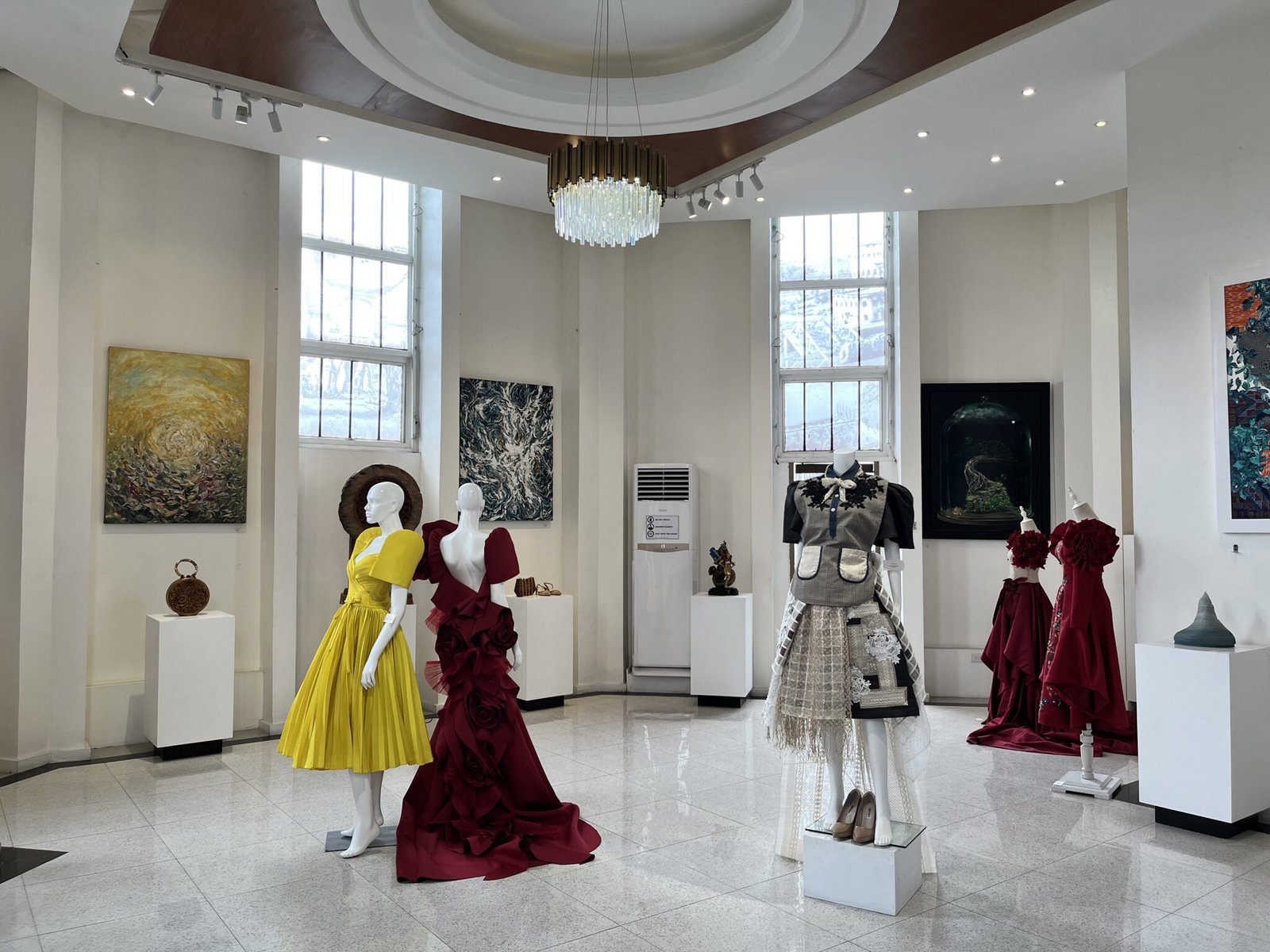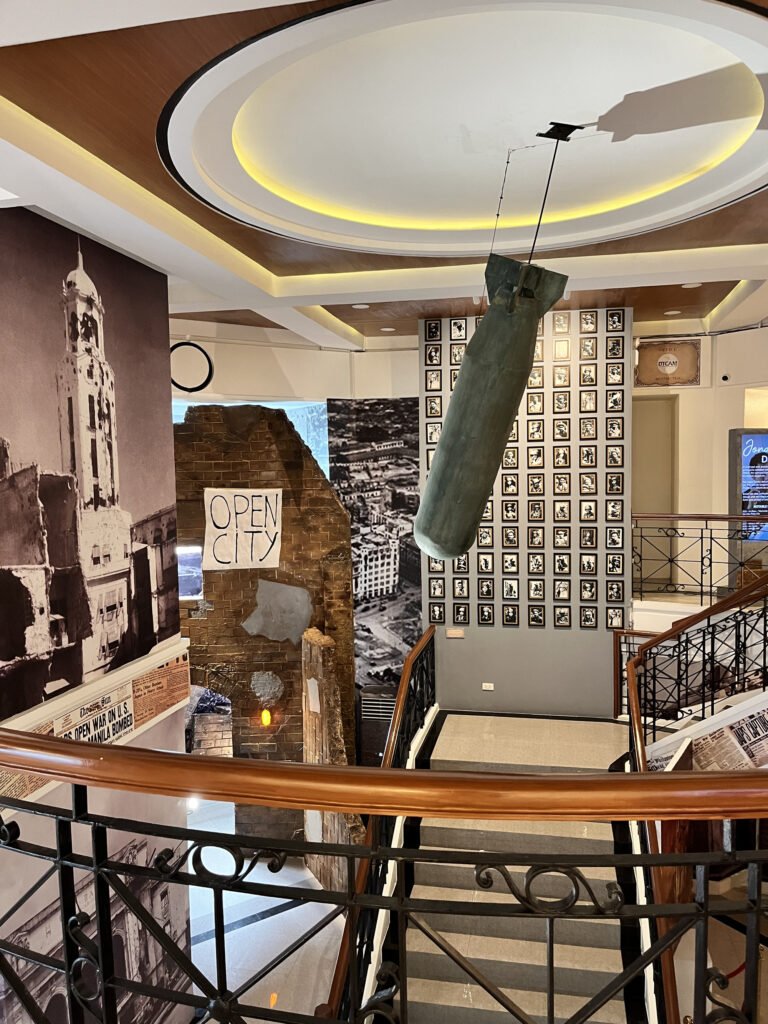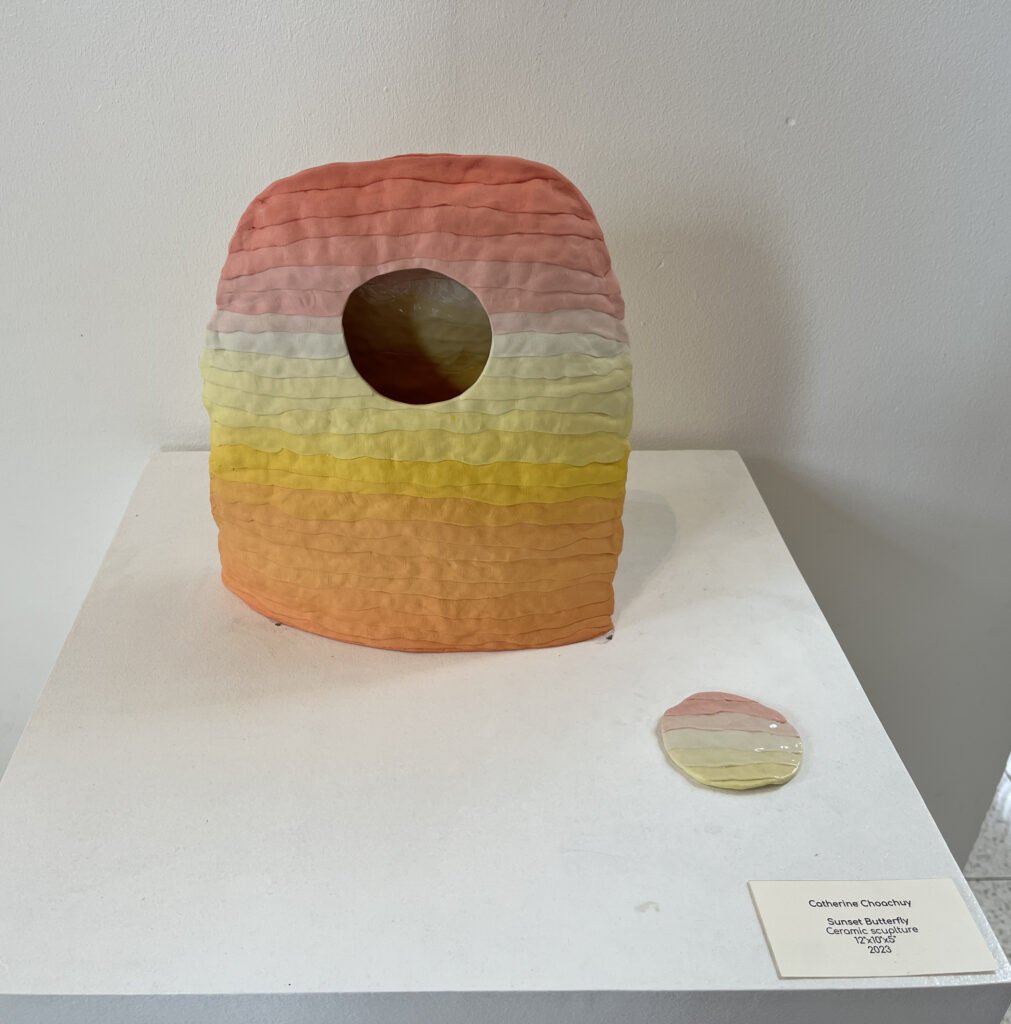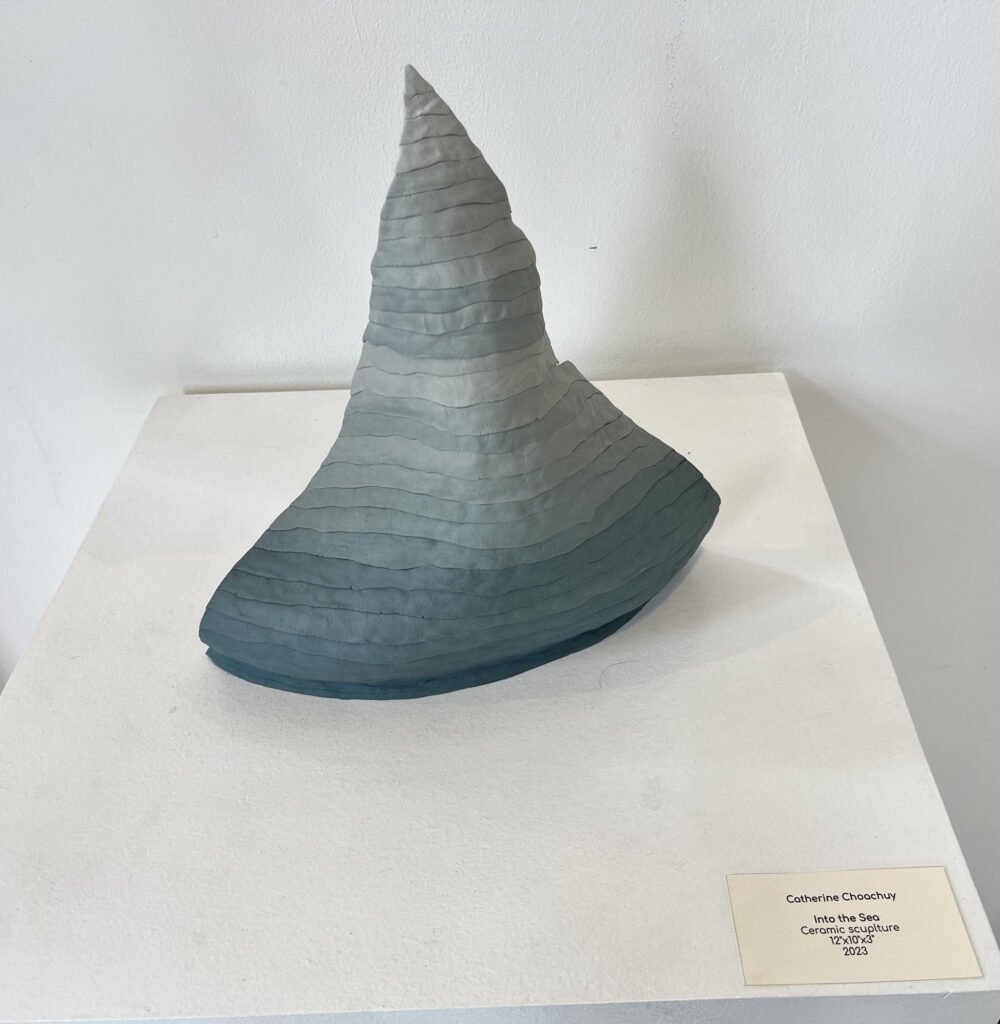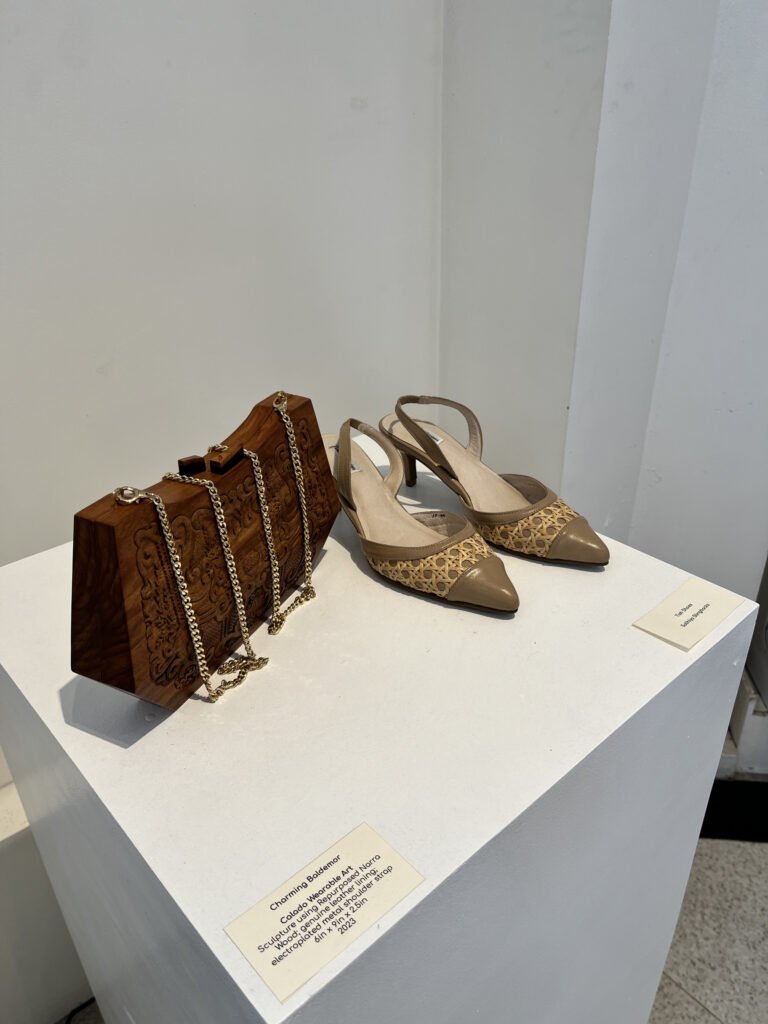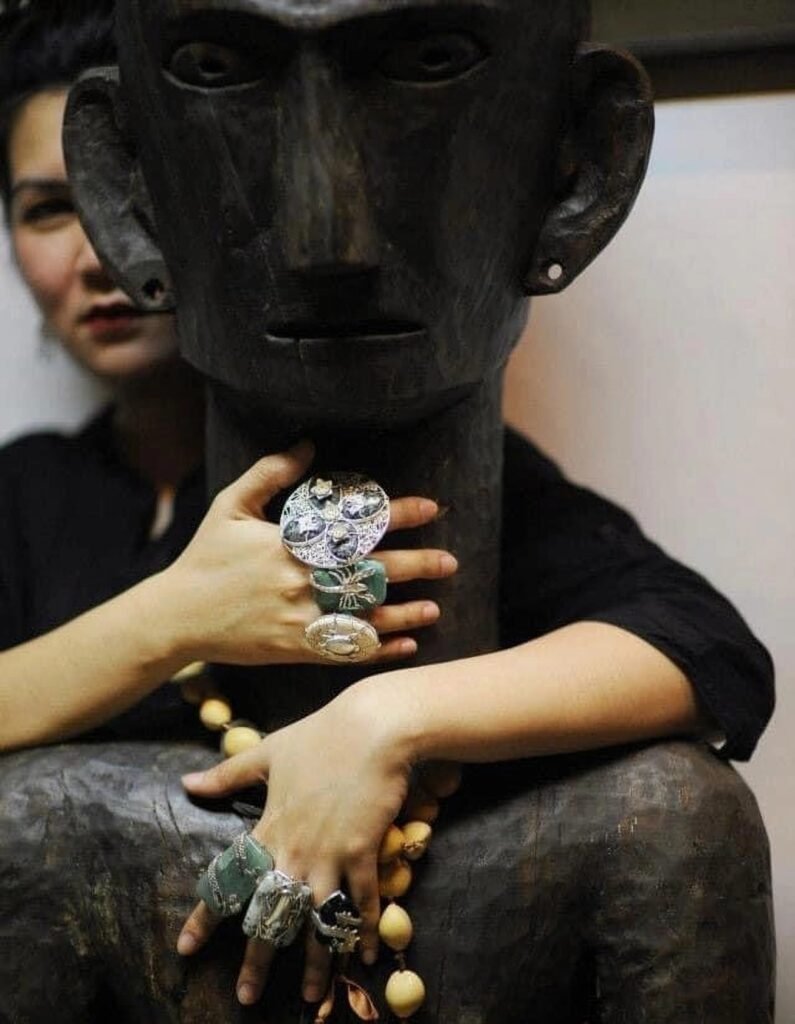Words and Interview Gabrielle de la Cruz
Images Gabrielle de la Cruz and Modern Manileña artists
The newly renovated Manila Clock Tower was officially opened to the public last October 25, 2022. It was first completed in the 1930s and was designed by the late architect Antonio Toledo.
Celebrating its first Women’s Month as a newly opened center for Manila art and history, the Manila Clock Tower Museum plays host to Modern Manileña, “a fashion and art exhibit inspired by and made for the empowered and global Manileña.” The exhibit covers the entire third level of the 100-foot-tall hexagonal clock tower, with Filipinianas in striking colors, bright paintings, and handmade artworks on display. With the tower being witness to Manila’s development from the post-war era to the present day, it could not be a more fitting venue for an exhibit that aims to showcase how the identity of a Manileña has evolved through time.
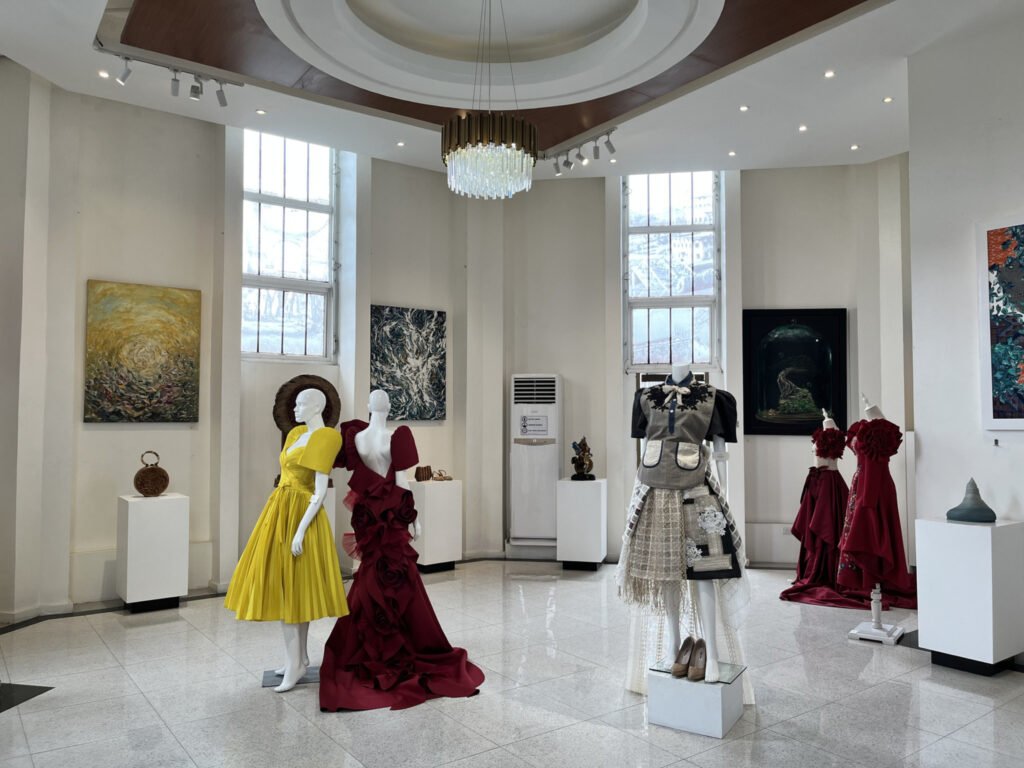

“Gone are the days when a dalagang Filipina needs to hide and succumb to inferior standards just to please patriarchal social norms,” says the Modern Manileña team. Featuring 15 artists from various creative disciplines, the collection demonstrates how the strength, power, and creativity of a Manileña have shaped local culture and heritage. It also celebrates the courage, talent, and beauty of a Filipina who is “unafraid to shine ever so brightly as she faces the challenges of the world head-on.”


Everyday Inspirations
The use of natural elements and colors is a prevalent theme in the exhibit. Ceramicist and owner of Pottery Sessions Studio Catherine Choachuy maximized this in both of her works, Sunset Butterfly and Into the Sea. “I like taking pictures of nature and traveling, so I interpret the transitioning of colors or the landscapes I see in my sculptures. For this exhibit, I translated the colors of the sunset in Manila Bay and the sails that I see from the Manila Yacht Club as physical art forms. These are the colors and scenes I see when I think of Manila.”
Painter Lilybeth ‘Ambit’ Mendoza did not look far for inspiration as well. She likens growing bonsai plants to her personal growth and makes this the subject of her paintings. “My nickname ‘Ambit’ actually means ‘little girl’ in Ilocano, which is why there is often an image of a little girl in my works.” Mendoza adds that life metaphors and stories of personal and artistic lives can be represented by a bonsai’s growth, one that may have started small but proves to be promising in the long run.


Subjects and Symbolisms
Another painting in the collection is the commemorative ‘Ambalang Ausalin in Spontanrealismus’ piece by artist Celeste Lecaroz. “My strongest ties with the city of Manila were shaped mostly when I worked at the National Commission for Culture and the Arts (NCCA). I handled various projects for all the indigenous communities all over the Philippines and it was there where I first met Ambalang Ausalin, a a’a pandey megtetennun (an expert weaver) from Lamitan, Basilan,” Lecaroz narrates. “Two decades later, she became a GAMABA awardee for her excellence in Yakan weaving styles and techniques. We crossed paths again in 2019 when she was already conferred as a National Living Treasure by the Government of the Philippines.”


Lecaroz often chooses iconic individuals as the subject of her paintings. She shares that what makes her spontaneous realism portrait of Ambalang Ausalin special is that she incorporated hints of a seputangan masterpiece of Ambalang Ausalin in it. “I have kept this masterpiece as a remembrance of her genius and outstanding dedication to promoting the Yakan or ‘people of the earth’… this painting is in honor of a friend, an inspiration, and a great example of a woman’s relevance in our society.”


Artist Charming Baldemor from Paete, Laguna, the carving capital of the Philippines, embraced her homegrown talent and used it to create wooden art. “I was exposed to the art of carving as a child, as my father also performs this as an art. He taught me how to pay attention to the details and how to carve with care,” she shares. “ I like to make use of repurposed and upcycled wood and materials that come from sustainable farms. Philippine flora and fauna serve as my inspiration, so I decided to produce wearable and wall artworks with floral detailing for Modern Manileña.”
While flowers can often be seen as delicate or even fragile, Baldemor regards them as symbols of women empowerment. Her message is simple: Women blossom and grow through the seasons. They are their own kind of beautiful.
Baldemor’s Calado Wearable Art and Flores de Mayo Wearable Art beside Tish Shoes by Marikina-based entrepreneur and shoemaker Tish Sevilla
Community Empowerment
As the exhibit aims to empower women in general, it also acts on the responsibility to provide a platform for women communities. Helena Alegre, who is known for her sculptural jewelry, has been working and continues to collaborate with a local community of jewelers in her hometown, Camarines Norte. Her Maria Clara series for Modern Manileña is a homage to her hometown as well, as these are “modernized versions of classical tambourine pendants” that are known, practiced, and preserved there.
She also crafted a Sarimanok piece for the exhibit. “Each piece took me two weeks…Sarimanok is inspired by the Singkil dance from Mindanao, which is a very significant dance in Bayanihan. It is a legendary bird for the People of Maranao, representing good fortune and prosperity. It is also a cultural symbol commonly used in enthronement and weddings.”
Sculptural Jewelry by Helena Alegre; Interwoven, Indigenous Philippine Fabrics (Tennun Yakan, T’nalak, Inabel, Manobo weave) and Acrylic on Canvas by Melissa Yeung Yap
Artist Melissa Yeung Yap worked with women weavers and women artisans, looking at the patterns they use and incorporating these into her paintings. She reveals that she was actually invited to do a solo show for Women’s Month, but decided to invite more artists and mount Modern Manileña with them. She also collaborated with Pepe Mendoza for the ‘Modern Manileña’ sculpture, which could be regarded as the centerpiece of the exhibit.
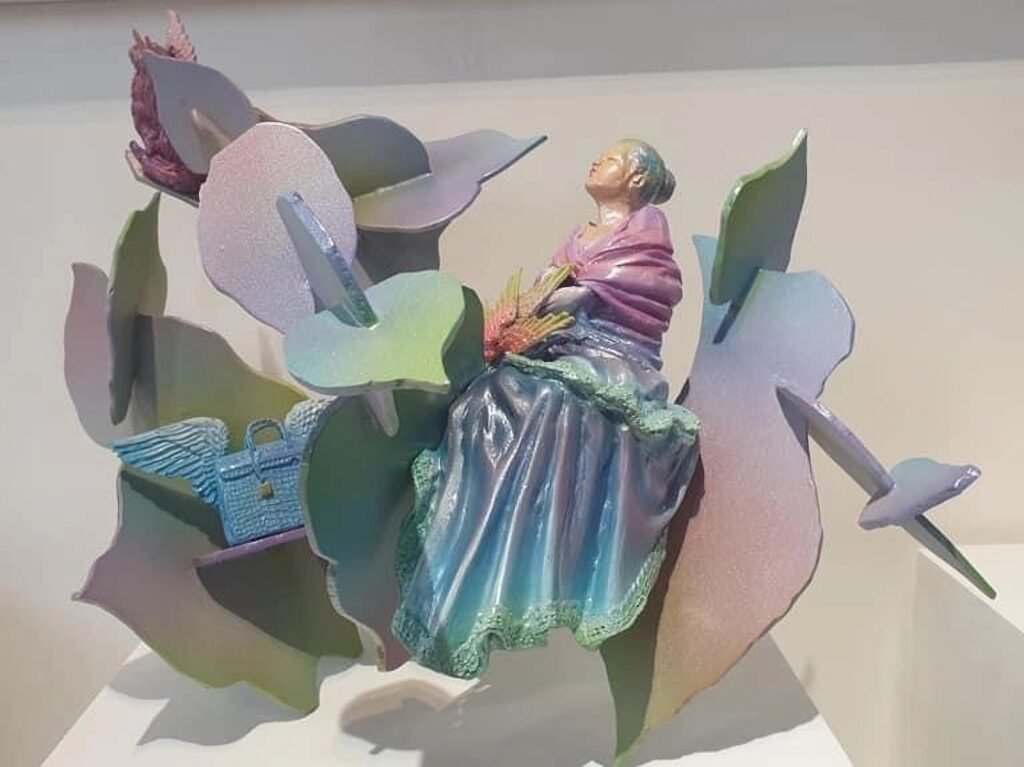

“I believe that a woman from Manila is not just a woman,” says Mendoza. “I believe in their abilities and their capacity to love fully. I believe in their innate intellect and excellence in their chosen craft… This is a salute to all the women of Manila.” •
Modern Manileña will run until March 31, 2023. The exhibit features Ambit Mendoza (Painting), Bea Araneta (Painting), Catherine Choachuy (Ceramics), Charming Baldemor (Wood Sculpture), Chinnich Candao (Painting), Helena Alegre (Painting and Sculptural Jewelry), Jo Rubio (Fashion), Jorel Espina (Fashion), Maela Grande (Painting), Megs Empinado (Sculpture), Melissa Yeung Yap (Painting), Pepe Mendoza (Sculpture), TISH (Shoes), and 37LA (Fashion).
Gabrielle de la Cruz started writing about architecture and design in 2019. She previously wrote for BluPrint magazine and was trained under the leadership of then editor-in-chief Judith Torres and previous creative director Patrick Kasingsing. Read more of her work here and follow her on Instagram @gabbie.delacruz.
